The main directions of development of missile boats of naval forces of foreign countries
American Conceptual Approach to Formation Together with NATO NATO European Allies and Partners in the Asia-Pacific Regionfleet out of a thousand warships ”implies, in particular, the creation of coalition forces of various types on sea (ocean) theaters of military operations. This approach is largely due to the coordination of reform plans in the leading Western countries of the structure of the national naval forces, the content, focus and implementation of shipbuilding programs, as well as the organization of the preparation and conduct of hostilities at sea.
So, in particular, the priority directions of development of the Navy of the Federal Republic of Germany, Italy, Great Britain, France, Spain and a number of other states of the Alliance are the creation of large ships of main combat types (multipurpose aircraft carriers, destroyers of squadrons, universal landing craft, corvettes and frigates of URO). These ships are able for a long time to perform combat missions at a great distance from the places of permanent basing. In this vein, the fight against the enemy's ship grouping in the waters, which are adjacent to the coast of the above states, is considered unlikely. In this regard, the protection of territorial waters and the protection of national interests in the economic maritime zones are entrusted mainly to patrol ships (boats) of the coast guard.
In general, this was perhaps one of the main reasons for the collapse of the construction of new missile boats (RCA) in these countries and the withdrawal of the existing RCA from the naval force. As a class, the RCA data are preserved in the structure of fleets of only some European countries that have a specific military-geographical position (the presence of small areas for navigation, access to a closed sea theater, island, torrential zones, etc.), as well as territorial problems with neighboring states.
In this regard, one of the main directions in the development of the class of rocket boats is the improvement of their tactical characteristics in order to increase the efficiency of solving arising combat missions in the near sea and coastal zones. The current RCA is supplied with new anti-ship missiles (PKR) with an increased range of fire, equipped with inertial control systems with correction according to the space radionavigation system (CRNS), telecontrol equipment and jam-proof homing systems that provide damage as surface targets not only near the coastline , but also in the closed water areas of ports and bays, and land facilities.
In addition, the current missile boats are equipped with effective means of self-defense, including rapid-fire artillery mounts (AU, caliber 20-30 mm), short-range anti-aircraft missile systems, and universal artillery (AU caliber 57 mm and above). A common practice, in particular, is the use of X-NUMX-mm Kompatto and Super Rapid artillery installations (maximum effective range 76 km) by Italian company OTO Melara on PKA.
The radio equipment of modern boats includes automated systems of combat control, communications and reconnaissance (ASBU), coupled with radar and optoelectronic systems for lighting surface and air conditions, active and passive means of electronic warfare, systems of mutual exchange of information, including the receipt of target designation data from external sources.
It should be noted that, according to existing views, missile boats should provide effective solutions to problems at a relatively short distance from the bases, which is covered by the range of anti-ship missiles. In peacetime, the main purpose of the RCA is to perform the functions of patrol boats. In this regard, the priority requirements for their main power plant (GEM) are: efficiency, reliability, high enough power density (maximum speed of 30-40 nodes and more), as well as the ability to maintain a small stroke for a long time (6- 7 nodes). In most cases, this led to the choice of developers of diesel power plant.
During the construction of the RCA, advanced technologies of reducing visibility in various wavelength ranges are widely used. To reduce radar visibility, the superstructure's lining is made of radio-absorbing materials, an X-shaped profile is attached to the external contours, and the multi-elementity in the superstructure architecture is minimized. In order to reduce the visibility in the infrared wavelength range, the exhaust gases of engines are usually carried out on a horizontal duct system below the waterline.
A typical example, in particular, is the Finnish boat of the “Hamina” type. The structure of its power plant includes two diesel 16V 538 TV93 (total power 7 550 hp) German company MTU, each of which works through a gear transmission on two reversible jet propulsion.
The armament of the RCA consists of four container launchers (PU) of MTO-85M anti-ship missiles. This rocket was created by the Swedish company SAAB on the basis of the RBS-15 MK 2 RCC. The main difference from the prototype is an improved turbojet engine, thanks to which the maximum firing range is increased by 50% - to 150 km. In addition, the boat is equipped with a Bofors 57-mm artillery unit, a vertical launch installation on eight Umkonto short-range anti-aircraft missiles (UMD) by the South African company Denel, as well as two 12,7-mm machine guns. The solution of anti-sabotage tasks is provided by the Elma nine-barrel grenade launcher.
The radio-electronic equipment includes a three-coordinate radar station (TRS-3D / I6-ES airborne and overhead target detection and control satellite (maximum detection range of 90 km aerial targets), as well as the Zeros 200 firing system with radar, television, thermal imaging stations and laser range finder. The boat is also equipped with a rocker and lowered hydroacoustic stations.
Processing data from the specified radio equipment or external sources, and issuing target designation systems weapons implemented using the ANCS-2000. In total, from the 1998 to the 2007 year, four PSCs of the Hamina type were built.
In the interests of the Greek Navy, seven rocket boats of the Ipopliarhos Roussen type are being built. Considering the longer operating area (includes the central part of the Mediterranean and the Aegean Sea), boats of this type compared to the Finnish RCA have an increased displacement (full - 660 t) and are equipped with a four-shaft power plant (four 595TE diesel engines with total power 23170 hp).
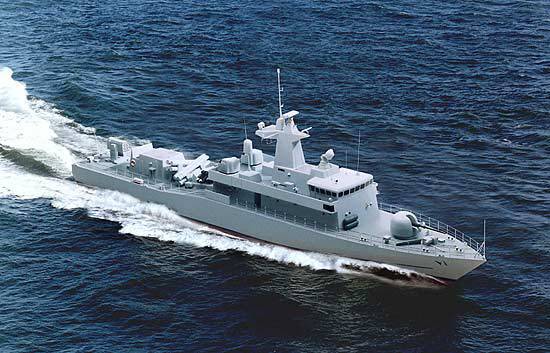
The armament consists of: two four-container launchers of Exoset anti-ship missiles MM-40 block 2 (maximum range 70 km) or block 3 (180 km), and the Ram self-defense missile system of the self-defense Ram on 21 SAM RIM , 116-mm gun mounts "Super Rapid" and two 76-mm single-barrel AU of the Italian company OTO Melara.
The opening of the tactical situation and the issuance of target designation to the weapon systems is provided by the “Tacticos” automated control system according to the three-coordinate PLC detection of air and surface targets MW-08 and the Mirador optoelectronic system, as well as from external sources via the Link-11 communication line
The Greek Navy has five IRAs of the Ipopliarhos-Roussen type. The last two corps will be transferred to the fleet in 2012.
Tactical and technical characteristics close to the Greek project have Kilic-type boats being built in Turkey since 1996 (the project was developed by the German company Friedrich Lürsen Werft). This RCA is also equipped with a four-shaft power plant (four diesel engines 956 TV91 from MTU) with a total power of 15 120 hp. and is characterized by comparable combat capabilities.
Armament of the boat: two four-container PU for firing the XRUM Block 2 RCC (maximum range of 120 km), 76-mm single-barreled and 40-mm paired gun mounts of the OTO Melara company, two 7,62-mm machine guns. The basis of radio-electronic means, as on the Greek boat, is the radar MW-08.
So far, eight boats have been built at the German shipyard "Lürsen" and the Turkish "Istanbul". The ninth corps was handed over to the fleet at the end of the 2010 of the year. In addition, the command of the Turkish Navy is working on the issue of building two more RCA of this type.
Fundamentally different is the design of the Umoe Mandal company, which implements the construction of a skeg type missile hovercraft for the Norwegian Navy. Their design feature are two hulls connected by a common deck, which, along with the superstructure, are made of multi-layer carbon fiber-reinforced fiberglass.
The catamaran scheme, according to experts, provides higher than one-hull ships stability of the boat, and the use of composite structural materials - a significant reduction in its visibility in different wavelength ranges and a decrease in displacement.
The significant innovative capacity of this project provided high tactical and technical characteristics of the Sheld-type boat and opportunities for solving a wide range of tasks.
A combined diesel-gas turbine power plant was installed on the head RCWAVP, which, during testing, provided the highest speed of 57 nodes at sea roughness, 1 score and 44 node - at waves up to 3 points. The following series of boats used a more reliable and easy-to-operate gas turbine installation - two sustainer STI8 and two afterburner ST40 turbines (developed by the American company Pratt & Whitney). At the same time, the total power of the power plant (about 16 000 hp) has not changed, which allowed to maintain the speed characteristics of the head boat.
It should be noted that, according to the results of testing and trial operation of the RKAVP in the Norwegian and US Navy, a number of changes were made to the project. In particular, the contours of the nasal tip of the hull are given a more sloping shape in order to reduce shock loads and the wave resistance of water. The upper deck in the tank area is reinforced with an additional set to accommodate the 76-mm artillery "Super Rapid" artillery unit instead of the previously planned 57-mm AU. As the main armament, the boat carries two four-container launchers of the NSM Norwegian new anti-ship missiles (maximum range 185 km).
In turn, the development of rocket boats is one of the important areas of modernization of the national naval forces in the leading countries of East Asia. It is believed that the large-scale construction of the RCA with relatively small amounts of financial expenditures makes it possible in a short time to expand the operational capabilities of the surface forces not only to solve tasks in the near sea zone, but also to combat enemy enemy ship groupings, as well as in the interests of disrupting its communications in relatively remote areas.
The corresponding program is implemented in Japan. The national naval forces have six HYABUS type RCAs deployed in the naval squadrons in the 2002-2005 years.
The armament of the boat includes four SS anti-ship missiles SSM-IB (maximum firing range 150 km), 76-mm artillery "Super Rapid" and two 12,7-mm machine guns. The radio-electronic means include radar detection of surface targets of national production, as well as radar and optoelectronic station fire control artillery. The absence of radar stations for detecting airborne targets limits the ability of the boat to defend itself against attacking airborne targets, primarily RCC.
The PRC Navy has the largest number of countries in the world in the combat force (more than 100 units). Since 2005, China has launched serial construction on the 022 project of Houbey-type catamaran launch boats to replace the outdated RCAs of the Huanfeng and Housin types. This project, developed on the basis of the Australian high-speed cargo-passenger ferry of the firm “Austal”, is characterized by a high degree of innovative solutions and, according to Western experts, is the most successful experience in introducing modern technologies to reduce the visibility and improve boat performance.
The two-part architecture provides RCA with increased seaworthiness, and a large deck area - placement of weapon systems and technical means.
A characteristic feature is the two-arch design of the nasal tip, formed by two lateral displacement hulls and the main platform connecting them, which in normal conditions is above the design waterline. This design allows for a headwater without reducing the speed of travel to reduce the degree of impact of shock loads, as well as the likelihood of the body's own vibration. In order to reduce the weight of the boat, all hull structures and elements of the set are made of aluminum alloys.
The low level of underwater noise is ensured by the use of two-stage damping of the main aggregates of the main power plant. It consists of two diesel engines with a total power of 6 865 l. c, each of which works through gears on two reversible jet propulsion. Along with the improved contours of the underwater part of the hulls, this makes it possible to develop the maximum travel speed up to 38 nodes.
Reduced thermal visibility RCA is provided by the output of exhaust gases cooled to 60-80 ° С to the inter-shell space at the waterline level.
The boats are equipped with two quadruple hangar-type PUs for firing with anti-ship missiles YJ-83 (maximum firing range of 150 km), PU is installed on the superstructure for the Jianway portable anti-aircraft missile system (12 SAM missile), the six-column 30-AU is located in the nose and the AU six-column XU-mm anti-aircraft missile system Type 630.
In addition to the navigation radar, the 362 Type surface and airborne radar detection system, as well as the HHOS 300 optoelectronic surveillance system, which includes a thermal imager, a highly sensitive TV camera and a laser range finder, are part of the radio-electronic means.
The construction of “Hubei” type boats is carried out simultaneously in four shipbuilding plants: “Tsiyushin Shipyard” (Shanghai), “Huanglu Shipyard” (Guangzhou), “Xi Jiang Shipyard” (Liuzhou) and No. 4810 (Lushun). So far, at least 40 RCA has been built.
In Taiwan, serial construction of the RCA of the Kuang Hua-6 type, equipped with a three-shaft diesel power plant of the German company MTU with a total power of 9 600 hp, is underway. It is based on four Syunfeng-2 launchers (maximum range of 150 km) and 20-mm 75 Type artillery of national production. In addition, reserved space for another AU "Type 75" and the launch pad of man-portable air defense missile systems.
Provision was made for the use of RCA as functional elements of a distributed system of information support and control of heterogeneous forces and means of the Taiwanese Navy. Due to the lack of own means of target designation, the formation of flight missions for firing anti-ship missiles is carried out by the ship-based ASU “Ta Chen” only on the basis of data from external sources.
The construction of rocket boats is conducted by two sub-series. The first sub-series Navy entered into service in May 2009 of the year, and the transfer of the fourth and fifth corps is expected before the end of the current year. In total, it is planned to build an 2012 RCA before the 30 of the year to replace the outdated type “High Oy”.
A large-scale program to create missile and artillery boats on a single project "Comtoksuri" is being implemented in the Republic of Korea. Unlike most foreign analogs, a combined diesel-gas turbine power plant is installed on Korean RCA, which includes two sustained diesel engines 16V1163 from MTU and two gas turbines LM500 from General Electric, connecting via a full-speed reducer.
The boats are equipped with nationally manufactured weapons systems, including two two-container launchers of SSM-700K Heson anti-ship missiles (maximum firing range of 150 km) by LIG NEX1, as well as one 76-mm and paired 40-mm artillery of Deu . Radio-electronic means are represented by MW-08 and Zeros 200 radar stations (gunfire control).
In March 2008, the Navy of the country was handed over the lead RCA "Young Yungha", and at the end of 2010, the second and third boats in the series. In total, before the 2018, in the shipyards of the Khanjyn Heavy Industries (Masan) and STX Shipbuilding (Jinhe) shipyards, it is planned to build 24 rocket and 18 artillery boats.
In general, an analysis of the main trends in the design and construction of rocket boats in foreign countries allows us to conclude that they are developing as multifunctional combat systems, which, according to the nomenclature of their radio engineering and rocket-artillery weapons, are approaching corvette-class ships and light frigates. Along with the traditional functions of the anti-ship (anti-cocking) support of the actions of the diverse forces of the national naval forces, the RCA are widely used primarily in peacetime to solve the tasks of sentinel and border guard services.
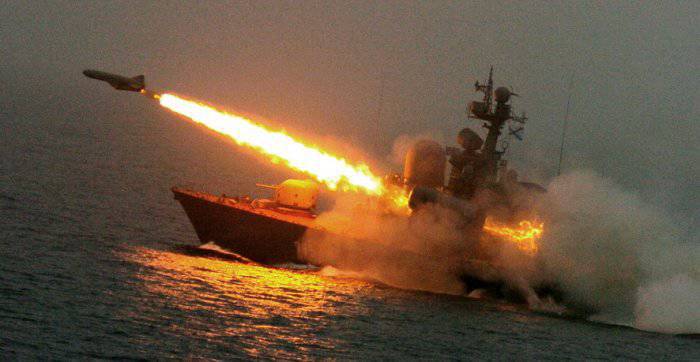
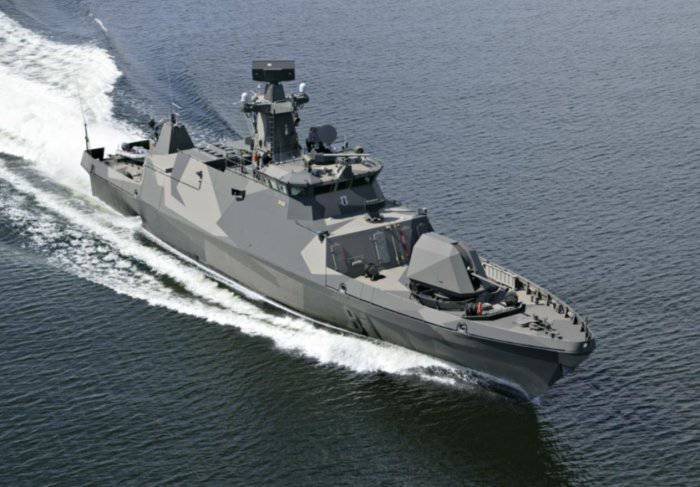
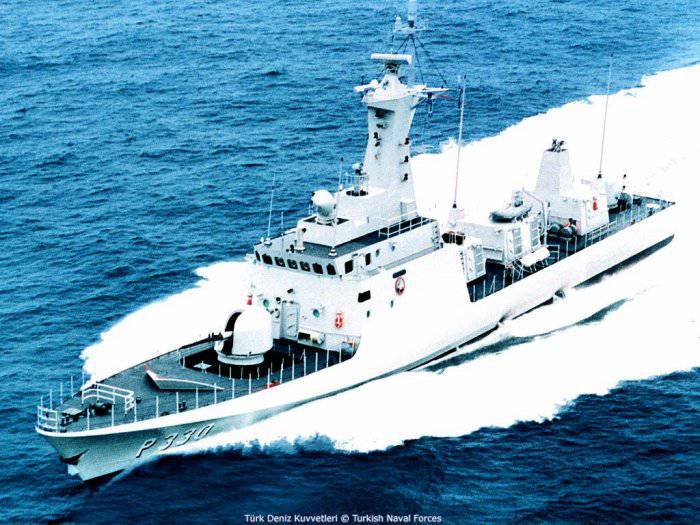
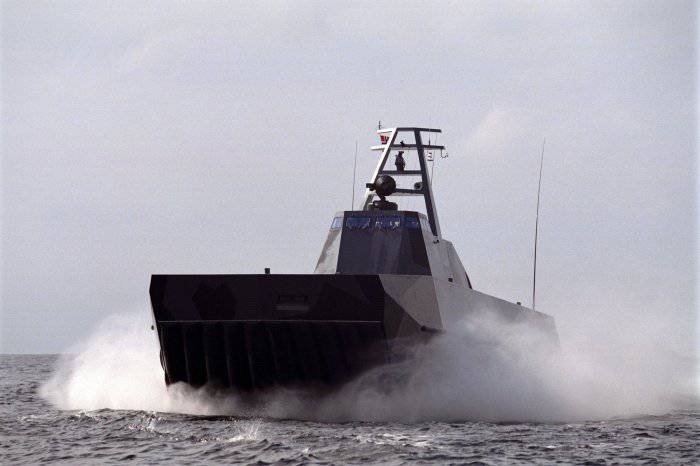
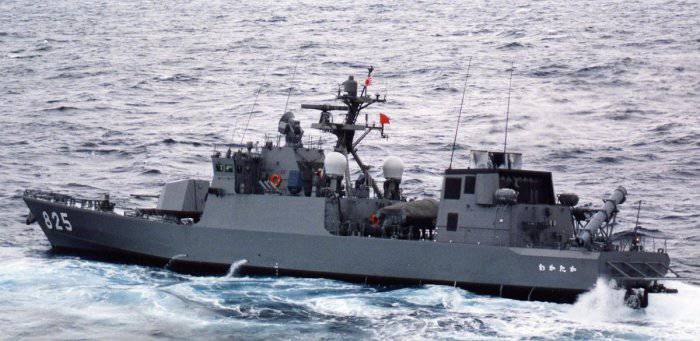
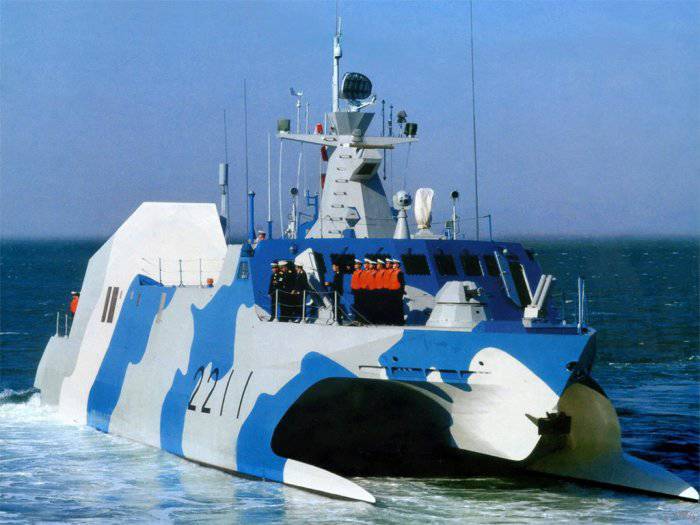
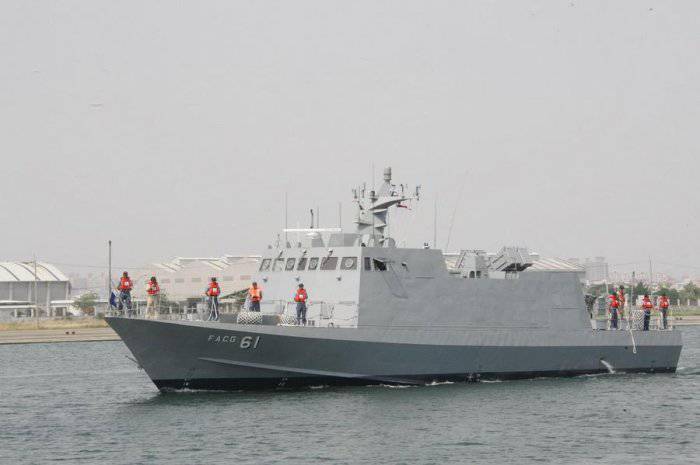
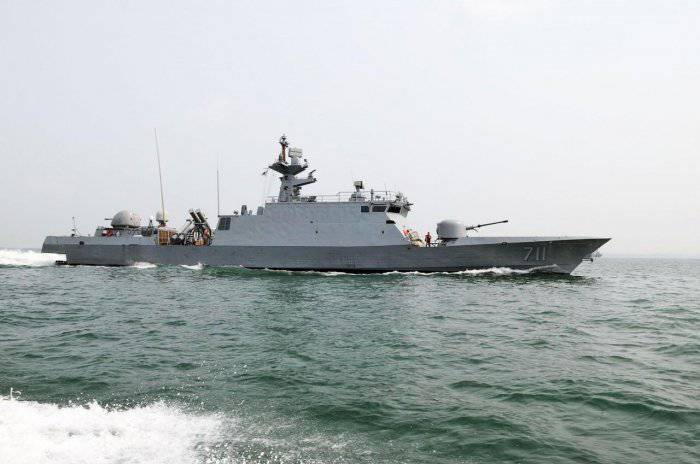
Information